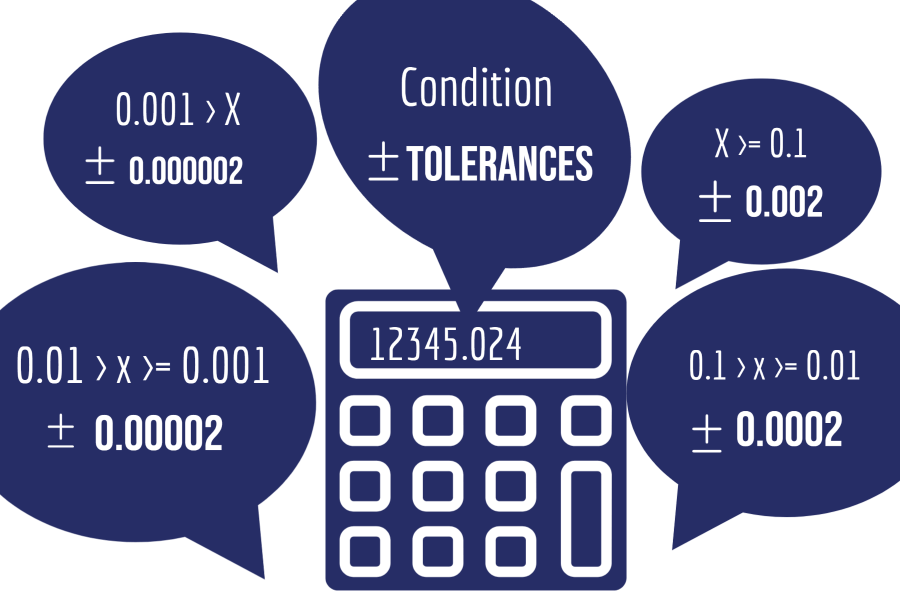
Accuracy in a calculation depends on the decimal place used in inputs and some generic coefficients, such as the number pi. Nevertheless, the calculation method is another critical parameter when it comes to accuracy in software development. Keep in mind that accuracy in mobile applications is different from that in scientific calculators.
In the engineering world, we must have correct and accurate calculations. While calculating an anode resistance in the soil, for example, one decimal is sufficient, but two is more precise, and three is highly precise (e.g., 24.1 Ω vs. 24.09 Ω vs. 24.091 Ω).
For input parameters of CCPTools, there is no limit on the decimal place and accuracy. Although the accuracy in the CCPTools output is not infinite, it is more than high enough for careful work. The accuracy of the output “x” is:
| Condition | Decimal | Tolerances |
| x >= 0.1 | 3 | 0.002 |
| 0.1 > x >= 0.01 | 4 | 0.0002 |
| 0.01 > x >= 0.001 | 5 | 0.00002 |
| 0.001 > x | 6 | 0.000002 |
Unit Conversion
In the CCPTools, there is the possibility of selecting SI and Imperial Units for inputs and outputs. When the different unit groups use SI and Imperial Units, the accuracy of the calculation becomes more complicated. The calculation engine of the CCPTools is based on SI units. This means that the inputs convert an Imperial Unit input to SI before performing the calculation, while in the output, you can select SI or Imperial Units. Moreover, you can find the applied conversion rate between SI and imperial in the Unit Converter section of the CCPTools.
Testing
Before publishing the first revision of CCPTools, we checked the accuracy and performance of the functions with more than 10k tests and input/output. Accordingly, we confirm that while the CCPTools accuracy is not infinite, it is quite high: much more than in common engineering practice!
If you have any comments or questions in this regard, please do not hesitate to contact us.